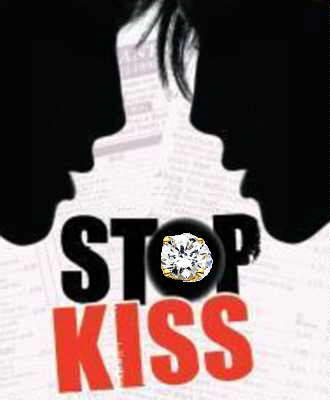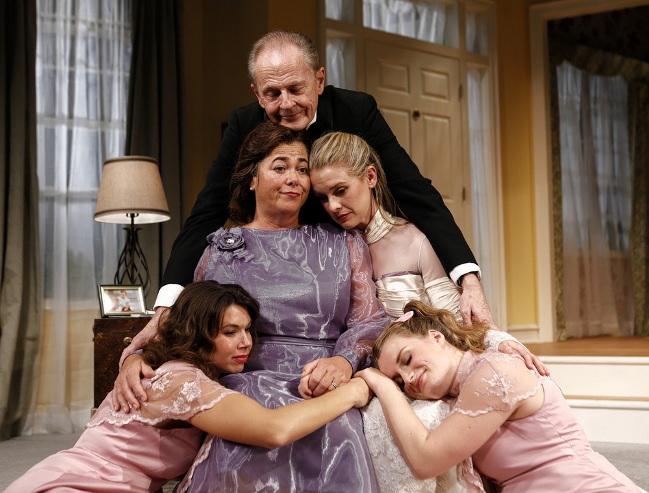republished for the “By Nancy” series
I first discovered this work while skimming other small theatre blogs. Imagine my pleasure that while skimming the “812.5s” at my local library, I discovered the play within our collection! I presume there was visionary librarian in Pleasantville in February 2000, when this gem of a play is indicated to have found a home here.
Stop Kiss is a light girl-meets-girl comedy that trips and falls hard into the not-quite-ready cruel world. Sara and Callie never planned on meeting, and may have never considered an affair, had their meeting never happened. The result is the true awkwardness of two people surprised by love captured within the beautiful yet ungraceful speech patterns of 20th century. Unfortunately that blossoming beauty is interrupted by a senseless act of violence that forces public definition upon two people who have yet to define what they have. Friends and family are mystified and well-meaning. Callie herself is at once exhilarated, surprised and confused.
The action is presented out of sequence, much in the style of Proof (Auburn). The juxtaposition of the non-linear scenes however aides to focus the viewer on both the beauty and the tragedy at once. We fear for the characters, knowing their fate before they do, on so many levels. The final scene ends with Sara and Callie’s awkward first kiss. We, the audience already know that this tenderness is fated to be followed by brutality. It is that brutality that forces definition. Perhaps definition of love is the most subtle and insidious brutality.
Production requirements are all feasible for most theatrical companies. It is best suited to a small stage. The cast is 6/7 (3m, 3/4f) with an age range from late 20’s to mid 40s. There are no ethnic restrictions. Several settings must be done simply as the scenes flow quickly: apartment, hospital examination, hospital room, police station house, hospital waiting room, street scene. The action is designed to be performed without intermission. Any props or costumes are contemporary: one nurse, one police detective. A series of vulgar epithets are repeated as Sara must repeatedly recount the attacker’s slurs. Editing for vulgarity would be ridiculous. Royalties are $80 per performance.
My recommendations are strong. The playwright is an American and a woman of color. The setting is again regrettably New York. However, the city of acceptance and opportunity seems in short supply of both. The irony makes the play more relatable to a broad audience. My community theatre isn’t brave enough…yet. I hope that yours is right now.
Provenance:
Diana Son is a producer and writer, known for Law & Order: Criminal Intent (2001), Blue Bloods (2010) and Love Is a Four-Letter Word (2015) http://www.imdb.com/name/nm1788547/ . She is the recipient of an NEA/TCG Theatre Residency Grant with the Mark Taper Forum, and a Brooks Atkinson Fellowship at the Royal National Theatre in London, and a member of the Playwrights Unit in Residence at the Joseph Papp Public Theater.
Son’s full length debut Stop Kiss was critically acclaimed. The play was produced Off-Broadway in 1998 at The Public Theater in New York City. It was extended three times. The play has been produced by hundreds of theaters since its initial run. In 2014, Stop Kiss was produced at the Pasadena Playhouse where it made the Los Angeles Times’ “Best of 2014” list1.
http://www.dramatists.com/cgi-bin/db/single.asp?key=2871
Available for lending from The Princeton Public Library, Princeton, IL
- McNulty, Charles (19 December 2014). “Charles McNulty’s best stage shows of 2014”. Los Angeles Times. Retrieved 18 January 2015.








